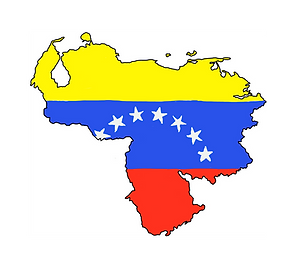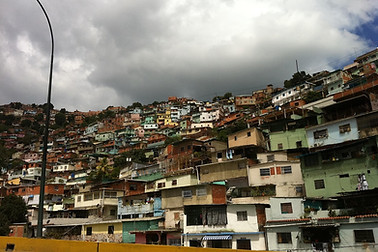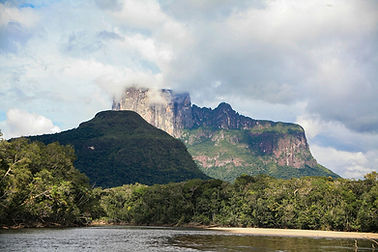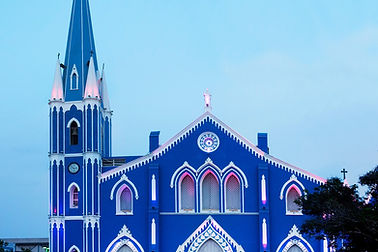
Venezuela

Image ©LanguagesonaPlate
Fact File
Capital: Caracas
Major cities: Caracas, Maracaibo, Valencia, Barquisimeto, Ciudad Guayana
Currency: Venezuelan bolivar (VED) Bs; U.S. Dollar $ (unofficial but de facto)
Population: 30.5 million (2023 estimate)
Official language: Spanish (castellano) - and 26 recognised regional languages.
Demonym in Spanish: venezolano
Overview:
Venezuela, blessed with extraordinary natural wealth, has long been seen as a country that should be among the richest in Latin America. Its vast reserves of oil and gas, alongside gold and other minerals, make it one of the most resource-rich nations in the world. Yet severe mismanagement, corruption, and the collapse of the state oil company, PDVSA, combined with international sanctions led by the United States, have left Venezuela in a prolonged state of crisis. Hyperinflation, mass emigration, and repeated clashes between government and opposition have defined recent decades, leaving a deep impact on its society and economy.
The country’s history stretches back to the Spanish colonial era, when it formed part of the Viceroyalty of New Granada alongside present-day Colombia and Ecuador, before gaining independence in 1821 under the leadership of Simón Bolívar.
Venezuela’s geography stretches from the Andes in the west to the Caribbean coast in the north, the Orinoco basin in the south, and the Guiana Highlands in the east. Angel Falls, the world’s tallest uninterrupted waterfall, with a single drop of 807 metres, is in this region. The country also faces an ongoing border dispute with Guyana over the oil-rich territory of the Esequibo.
Caracas

Image ©Anderele
Caracas
Caracas, the capital of Venezuela, has been the nation’s political and cultural centre since colonial times. Founded in 1567 on the site of an indigenous settlement, it became the administrative capital of the Province of Venezuela under Spanish rule and grew in importance as a hub of trade and governance on the Caribbean coast.
Caracas is central to Venezuela’s independence story as the birthplace of Simón Bolívar, the “Liberator” of much of South America. His legacy is present throughout the city, from the National Pantheon, where his remains rest, to the numerous statues, museums, and institutions that bear his name. This deep association with Bolívar has helped shape Caracas’s identity as the symbolic heart of the nation.
Alongside this political and historical weight, the city also reflects the transformations of the 20th century. Oil wealth reshaped Caracas into a modern metropolis, replacing much of its colonial heritage. The most well-known example of its modern transformation is the Universidad Central de Venezuela, which was recognised by UNESCO as a World Heritage Site.
Salto Ángel

Image ©Franara
Angel Falls
Angel Falls (Salto Ángel in Spanish), the world’s tallest uninterrupted waterfall, drops 807 metres from the summit of the Auyán-tepui in southeastern Venezuela. Set within Canaima National Park, a UNESCO World Heritage Site, the falls are framed by the unique tepui table mountains and dense rainforest, creating one of the most striking landscapes in South America.
Curiously, the falls are not named after a celestial figure but after the American aviator Jimmy Angel, who first flew over them in 1933 while searching for gold deposits - they were unknown outside of Venezuela at the time. When his plane later crash-landed on top of the Auyán-tepui, the story gave further fame to the site, and the waterfall became known internationally as Ángel Falls. Among the Indigenous Pemon people, however, it has long been called Kerepakupai Merú, meaning “waterfall of the deepest place.” In recent years, there have been discussions in Venezuela about restoring its Indigenous name.
Maracaibo

Image ©Pixabay
Maracaibo
Maracaibo, Venezuela’s second most populous city, lies on the shore of Lake Maracaibo, one of the largest natural lakes in South America. Founded in 1529 during the early years of Spanish colonisation, the city grew slowly at first due to its isolation, but its strategic position on the lake eventually made it an important commercial hub.
The city’s identity is inseparable from the discovery of oil. In 1914, the first major oil well, Barroso 2, erupted near Maracaibo, marking the beginning of Venezuela’s oil boom. This transformed both the city and the nation, drawing workers and companies from abroad and fuelling Venezuela’s rapid economic growth in the 20th century. For decades, Lake Maracaibo was the heart of Venezuela’s oil industry, its surface dotted with rigs and tankers, and Maracaibo became known as the country’s oil capital. In recent decades, however, Lake Maracaibo has faced severe decline, with pollution, oil spills, and algae blooms threatening both the environment and the livelihoods of surrounding communities.
Associated Content
Cuisine:
Discover more about arepas, a traditional Colombian and Venezuelan cornmeal cake with rich history and diverse regional variations.
